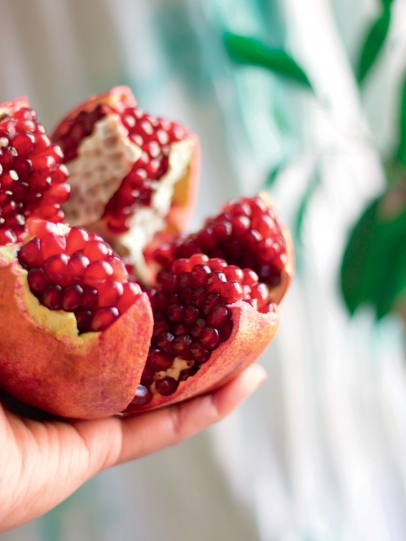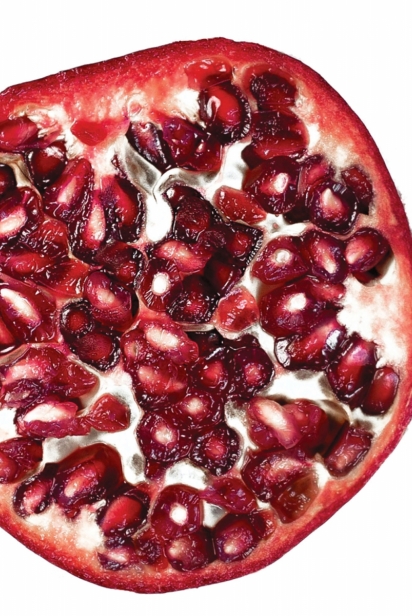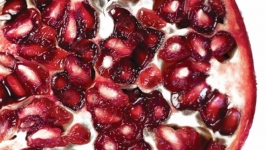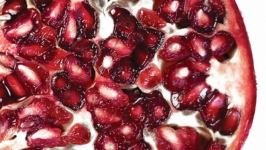Pomegranates
EXTRACTING THE EXOTIC
POMEGRANATES, brought to California by Spaniards in the 1700s, grew readily in the state’s Mediterranean climate. Although they were still a relatively small commercial food crop in the 1920s, they were a common decorative shrub, found in yards and on public streets from San Diego and Hollywood to Lafayette and Fresno. In fall, the tough-skinned, ruby-red fruits were commonly incorporated into the cornucopia of fall décor, along with gourds, dried corn and pumpkins.
If you grew up in California like I did, pomegranates were also likely a childhood favorite, plucked from the shrubs and then eaten out of hand, sitting on curbs or porches, where our parents banished us because the juice stained everything, including our bodies.
For centuries before the fruit made its way to California, the pomegranate had been an important part of the dishes of the Middle East and India, where the fruit originated. From there, the cultivation of pomegranates spread throughout the Mediterranean, Asia and Africa.
The fruit has a leathery skin that when cracked open reveals hundreds of juice-filled, sweet-tart sacs, called “arils,” each surrounding a tiny seed. The arils are couched in pithy, cream-colored membrane, which is quite bitter.
The arils, what we commonly refer to as pomegranate “seeds,” are used to add a pop of color, as well as taste, to both sweet and savory dishes such as puddings and cakes, salads and soups and stews. The seeds can also be pressed to extract the juice, which can then be cooked with sugar to make syrup or further reduced to make pomegranate molasses. Both of these have a myriad of uses throughout the year.
HOW TO OPEN AND SEED A POMEGRANATE
Cut off the top crown. Make four to six slits through the skin. Fill a bowl or sink half full with water. Hold the pomegranate under the water and peel away the skin. To extract the arils from the membrane, break the fruit into pieces and, using your fingertips, gently rub the arils to separate them from the membrane. The membrane pieces will float to the surface, leaving the arils behind. Once the arils have been freed, gather them up into a colander to drain. Well drained, they can be refrigerated for up to four days before they start to soften.
WAYS TO ENJOY POMEGRANATES
PEAR SALAD WITH BLUE CHEESE, WALNUTS AND FRESH POMEGRANATE SEEDS










